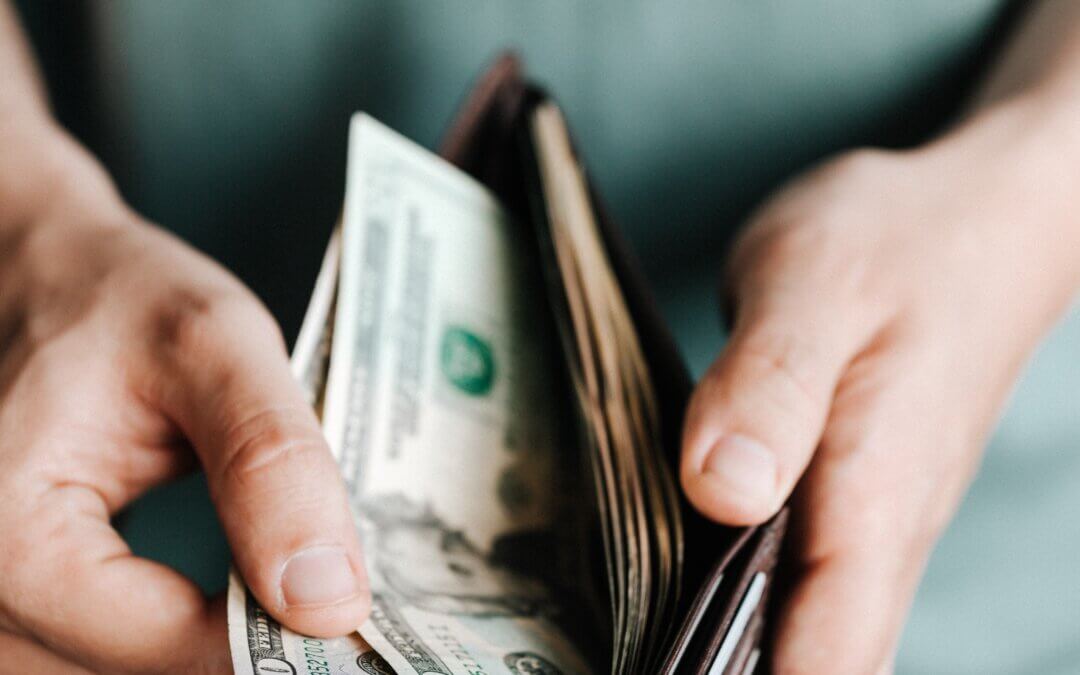Show me the money!
That’s what 165 million Americans shouted earlier this year when direct stimulus checks found their way to qualifying recipients. Those that desperately needed the funds spent it immediately while others saved or splurged depending on their personal circumstances. Early spring as vaccine rollouts got underway consumer concerns about health and that of their loved ones had slightly subsided and financial stresses are becoming a bigger cause of anxiety than the virus. While the labor market has improved, long-term financial stability for much lower to middle-class Americans has a long way to go. Evidence of this is abundant in many different ways, but most strongly seen was when many Americans choose to immediately save their stimulus checks vs spending them. Personal savings in the US spiked to 33.7% in April this year, the highest rate ever recorded. However, it remains to be seen if those that immediately saved their stimulus checks will have spent their funds before the end of summer. As consumers get more comfortable venturing out more, visiting stores, malls, restaurants, taking vacations, attending in-person events, etc there has been a natural shift from spending online to in person. Everyone felt the pent-up demand in the spring across industries. Most likely fueled by being indoors for so long, American spending habits saw a sharp increase in personal consumption in late March and April. While pent-up demand and willingness to spend in specific categories such as travel, dining, and retail, caused economic growth in a subset of industries others such as theaters and amusement parks, for example, keep seeing declines. Reports also indicate consumer spending has leveled out and has been flat since May.
Changing Economics
We are now in mid-August and things are once again quickly changing. The consumer sentiment index is already down 13% from July indicating that fears are looming about the path of the economy. As income payments associated with the American Rescue Act have become less, IRS tax refunds further delayed for millions of people, stock market volatility, employment issues, pay cuts and lack of salary adjustment combined with increasing inflation, (and just too many more factors to list) the fact is, many American consumers including high earners, are curtailing their spending habits. The short-term outlook for income, business, and the labor market has relatively not changed since July, which was preceded by five months of gains. But the long-term outlook is a little more uncertain. And even though consumer confidence remains flat, it’s still at its highest levels since February of 2020. Which is a good thing. All indicators pointing to; while business conditions improved slightly in July, and the labor market is also improving, consumer confidence is starting to see some decline as the delta variant of Covid-19 spreads across the U.S.. The hope for everyone is that the pent up demand seen across categories such as goods and services, vacation and travel, live music/entertainment, restaurants, weddings, and going to school will remain relatively strong into the year 2022 and will be the kick motor that helps keep the U.S (and other(s)) economy going. Let’s hope.
Rising Threat of Inflation
Prices continue to rise at the fastest pace ever in recent years. Almost all industries were faced with supply chain challenges as a result of Covid-19 and today are now facing inflationary pressures as the economy emerges from the pandemic. Unfortunately, these supply chain challenges will continue well into 2022 or until this pandemic is over. The U.S consumer price index, (a survey of a variety of goods) reported last month prices rose 5% compared to just a year ago. Normal inflation is around 2%. What does this mean for the economy and your wallet/money? Well, economists will argue that inflation is a sign of a healthy recovery, but for simple folks like me and you, it’s having to pay more to get the same things. I am certain some of you noticed by now that your weekly grocery budget isn’t cutting it anymore and you are paying more for gas at the pump. That’s usually where you feel it first. Across categories (energy, car, food, transportation, gas, travel & hospitality, etc.) the U.S economy aggregated demand has surged, but supply has not kept pace, and with the increased pent up demand, and other overlapping factors from the pandemic, such as low-interest rates, injection of stimulus money, this has all lead to the outpacing of supply, (or shortages in goods/supply) resulting in economic growth at the costs of a jump in prices. Inflation is continuing to rise and it could affect your money. Get ready for sticker shock this fall as supply chains catch up with consumer needs.
As inflation erodes purchasing power are you starting to curtail your spending habits?
Until next Time ~ Ayri
To Learn More About Me click around, check out my Tourism & Lifestyle Blog.
Want to chat, send me a note and I’ll happily circle back.


Recent Comments